|
|
Aquifers and cavesAquifer and cave GDEs are dependent on the subterranean presence of groundwater (i.e. subterranean wetlands). Aquifer ecosystems are groundwater dependent and may provide suitable habitat for stygofauna (specialised groundwater fauna). Australia supports a rich array of these subsurface aquatic environments ranging from the aquifers of the Great Artesian Basin to the karst system in Ida Bay, Tasmania[2]. Related pages
What are subterranean wetlands?
|
|||||||||||||||||||||||
|
|
Linkages between subterranean wetlands and other ecosystems |
|
|
|
|
Subterranean wetland biodiversity

Typical subterranean wetland biodiversity often includes:
- a low number of genetic lineages—resulting in species which look dissimilar to related groups[5]
- high endemism—plants and animals that only live in one area or place e.g. a species that only lives one cave wetland[5]
- relict taxa e.g. from previous climatic conditions[5]
- phreatomorphies—groundwater adapted crustaceans belonging to different phyletic groups evolve convergently a suite of traits, called by Coineau[4], phreatomorphic characters when animals occupy interstitial habitats or troglomorphic traits for cavernous dwelling animals[3]e.g. smaller bodies or enhance sensory organs used to live in the dark.[10]
Subterranean fauna: stygofauna or trogofauna
Troglofauna are terrestrial, air-breathing fauna that do not rely directly on groundwater, although groundwater provides them with a humid environment and carries food from the surface. Stygofauna refer to all aquatic fauna in groundwater. Stygofauna can be classified depending on how much of the life cycle is spent in groundwater (see diagram).
| Characteristics of subterranean ecosystems | Ecological implications |
|---|---|
| Shared characteristics | |
| Relatively stable environmental conditions compared with surface aquatic environments | Buffered from environmental change taking place at the surface; habitat for relict lineages; fauna are morphologically conservative; selective pressure for cryptic speciation. Some species have restricted ability to respond rapidly to changes in groundwater regime or to recolonise readily after local extinction |
| Lightless | No primary producers; heterotrophic microbes form the basis of food chain, providing ecosystem services; food web truncated, dominated by detritivores, with few predators, and herbivores represented only by root-mat feeders; a trophic shift towards omnivory |
| Restricted inputs of energy; low productivity | Rate and timing of organic carbon supply determined by recharge pattern; fauna have slower metabolic rates, longer life cycles, lower fecundity than surface counterparts; overall faunal densities are usually very low |
| Characteristics that vary among subterranean aquatic ecosystems | |
| Void size | The void size determines available living space and groundwater flow rates |
| May be spatially discrete | Restricted dispersal and recruitment; potential for speciation and short range endemism |
| May be connected to surface ecosystems | Groundwater discharge may support surface ecosystems; recharge provides organic carbon and dissolved oxygen, and influences the groundwater regime |

What stygofauna can tell us
The presence or changes to stygofauna can be used to determine:
- surface water connectivity
- water quality
- the biodiversity, health and function of groundwater dependent ecosystems
- the effectiveness of water management strategies through collection of baseline data.
Wetland on-line education modules
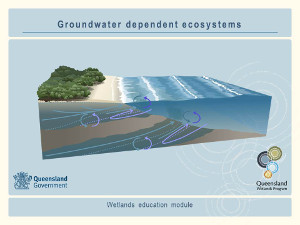
A series of on-line education modules, including Groundwater dependent ecosystems, has been prepared as a resource for people who want to learn more about wetlands.
Users can download and use the contents of this education module to meet their learning and training needs. This information should be used in conjunction with information found on this website.
Additional links
- Queensland subterranean aquatic fauna database
- Nutrients and herbicides in groundwater flow to the Great Barrier Reef Lagoon—Report
- Australian Government groundwater publications
- National Groundwater Information System
- Dependence of Ecosystems on Groundwater and its Significance to Australia
- The National Centre for Groundwater Research and Training
Pages under this section
References
- ^ Bakalowicz, M (2005), 'Karst groundwater: a challenge for new resources', Hydrogeology Journal, vol. 13, no. 1, pp. 148-160.
- ^ a b Boulton, AJ, Dole-Olivier, MJ & Marmonier, P (March 2004), 'Effects of sample volume and taxonomic resolution on assessment of hyporheic assemblage composition sampled using a Bou-Rouch pump', Archiv für Hydrobiologie, vol. 159, no. 3, pp. 327-355.
- ^ Christiansen, K (2005), 'Morphological adaptations', in D C White & W B White (eds), Encyclopedia of Caves. [online], Elsevier, Academic Press, San Diego, pp. 383-383-397. Available at: http://www.sciencedirect.com/science/book/9780123838322.
- ^ Coineau, N (2000), 'Adaptations to interstitial groundwater life', in H Wilkens, D C Culver & W F Humphreys (eds), Ecosystems of the World 30: Subterranean Ecosystems, Elsevier, Amsterdam, pp. 189-210.
- ^ a b c EPA (2012), A review of subterranean fauna assessment in Western Australia DISCUSSION PAPER. [online], Environmental Protection Authority, Perth. Available at: https://www.epa.wa.gov.au/policies-guidance/review-subterranean-fauna-assessment-western-australia-discussion-paper.
- ^ a b Freeze, RA & Cherry, JA (1979), Groundwater, Prentice-Hall, Englewood Cliffs.
- ^ Halliday, WR (April 2007), 'Pseudokarst in the 21(st) century', Journal of Cave and Karst Studies, vol. 69, no. 1, pp. 103-113.
- ^ Hancock, PJ & Boulton, AJ (December 2005), 'The effects of an environmental flow release on water quality in the hyporheic zone of the Hunter River, Australia', Hydrobiologia, vol. 552, pp. 75-85.
- ^ Humphreys, WF (1999), 'Physico-chemical profile and energy fixation in Bundera Sinkhole, an anchialine remiped habitat in north-western Australia', Journal of the Royal Society of Western Australia, vol. 82, pp. 89-98.
- ^ Sanda, L, Namiotko, T & Danielopol, DL (2007), 'Evolutionary and taxonomic aspects within the species group Pseudocandona eremita (Vejdovsky´ ) (Ostracoda, Candonidae)', Hydrobiologia. [online], no. 585, pp. 159-159–180. Available at: https://www.researchgate.net/publication/225939879_Evolutionary_and_taxonomic_aspects_within_the_species_group_Pseudocandona_eremitaVejdovsky_Ostracoda_Candonidae.
- ^ Ward, JV & Palmer, MA (July 1994), 'Distribution patterns of interstitial fresh-water meiofauna over a range of spatial scales, with emphasis on alluvial river aquifer systems', Hydrobiologia, vol. 287, no. 1, pp. 147-156.
Last updated: 22 February 2015
This page should be cited as:
Queensland Government, Queensland (2015) Aquifers and caves , WetlandInfo website, accessed 8 May 2025. Available at: https://wetlandinfo.des.qld.gov.au/wetlands/ecology/aquatic-ecosystems-natural/aquifers-caves/


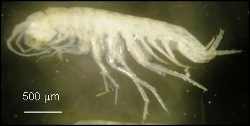
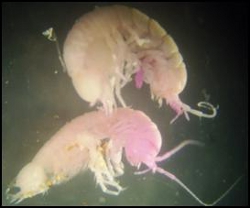

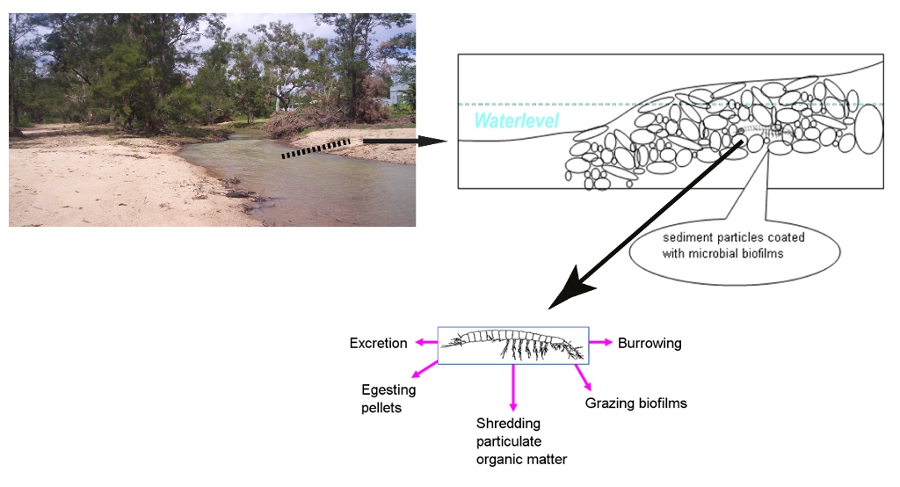
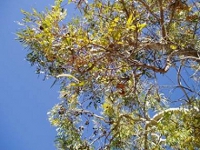
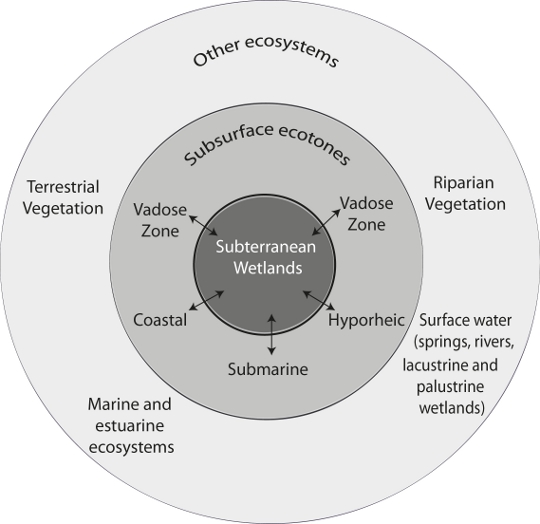
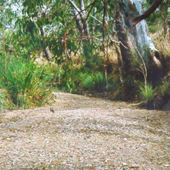
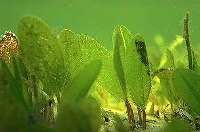
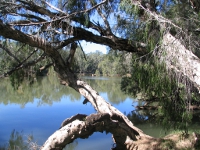


 — Department of the Environment, Tourism, Science and Innovation
— Department of the Environment, Tourism, Science and Innovation